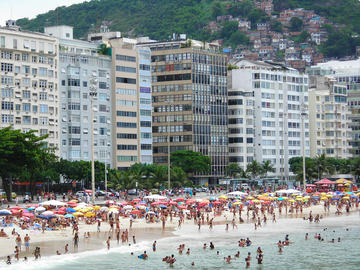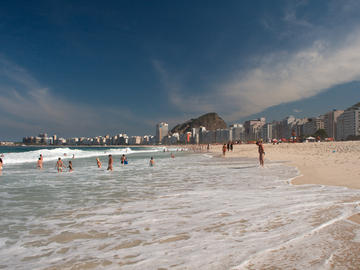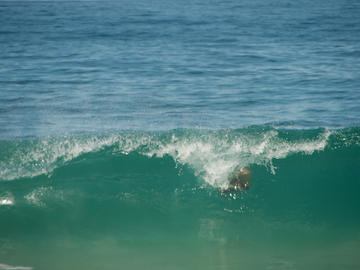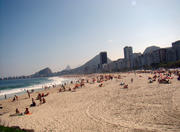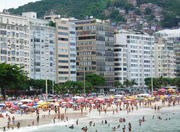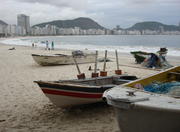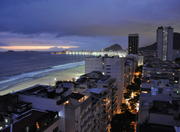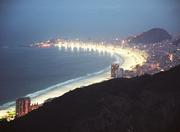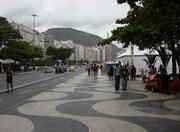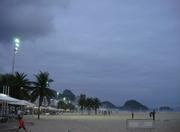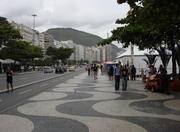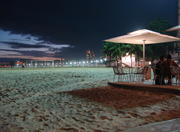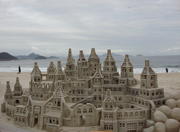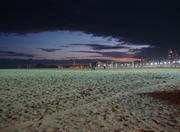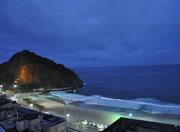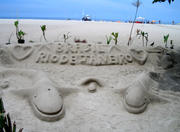Copacabana Beach Picture 15
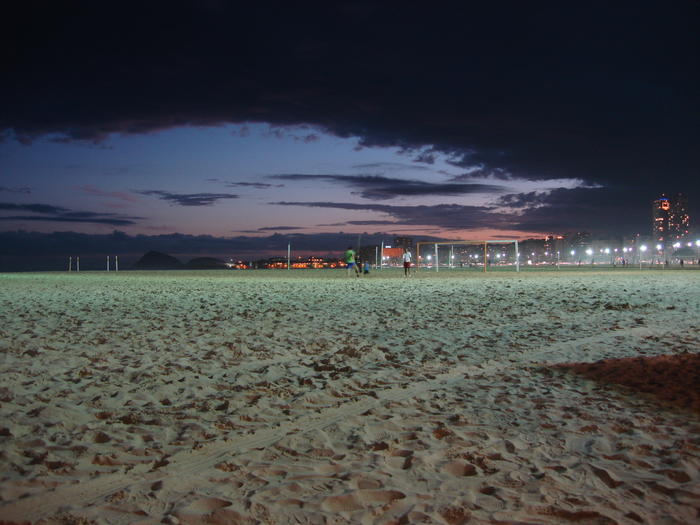
More information on Copacabana Beach in Rio de Janeiro Photo by: Jorge Lascar
Copacabana Beach in Rio de Janeiro
Considered to be one of the most famous beach in the world, it stretches for 5.15 kms along Avenida Atlântica until the Copacabana Fortress. Lovingly nicknamed by the people “Little Princess of the Sea”, a popular song by Brazilian composers João de Barro, Braguinha and Alberto Ribeiro, Copacabana beach is located in the neighborhood of the same name, in the South Zone of Rio de Janeiro. Copacabana has bike parking facilities, a cycling track, kiosks, hotels, bars and restaurants, attended regularly during the day as well as during the night. There are also two military fortresses, open to visitors, one at each end of the beach, with panoramic views.
There is also great interest in the beautiful wide sidewalk on Avenida Atlântica with Portuguese paving stones in black and white, forming an attractive mosaic in the shape of waves, inspired on the Lisbon sidewalk and used by Burle Marx on the beach. Copacabana has a great infrastructure of hotels and kiosks, attracting tourists from all over the world.
Copacabana beach stages the biggest New Year’s Eve festivities on the planet, with the world renowned fireworks, bringing together over three million people. Bounded by Atlantic Avenue, its sands are home to other large events such as world championships of beach soccer, volleyball world championships, the scene of concerts bringing together up to 1 million people (as the Rolling Stones).
The beach is completely lit up at night, allowing people to enjoy the area late into the night. Vacation goers are treated to a wide strip of sand to lay out on, which is also filled with volleyball nets and other sporting activities. The audience is varied, bringing foreign tourists, locals of various neighborhoods, children, young and old.
Copacabana beach history is a mix of glamour and glory. In the 1970s, there was a large landfill led by hydraulic engineer Hildebrand de Goes Filho, president of the CBD, which increased the area of the beach and whose main objectives were: to extend the tracks of Atlantic Avenue, the passage of oceanic interceptor, tubing that carries all the sewage from the southern district of Ipanema to the outfall, and also prevent that storm surges reached up to the Nossa Senhora de Copacabana Avenue and invade the garages of the buildings of Avenida Atlantica. Later, bike lanes and a few kiosks for public attendance were built on the shore, which are currently being refurbished in partnership with the private sector.
Studies on physical models of hydraulic extension were performed at LNEC, in Lisbon. In this model, in Lisbon, the Portuguese engineers who worked in the project were Fernando Maria Manzanares Abecasis, Veiga da Cunha, Antonio Pires and Daniel Brown, Vera Cruz and the Brazilian engineer Jorge Paes Rios.
The beach was used as headquarters for some events in the Pan American Games 2007. On holidays, such as Holy days and other, often hosting events such as musical performances, theater and events of political, humanitarian and religious.
More Photos of Copacabana Beach Picture 15
